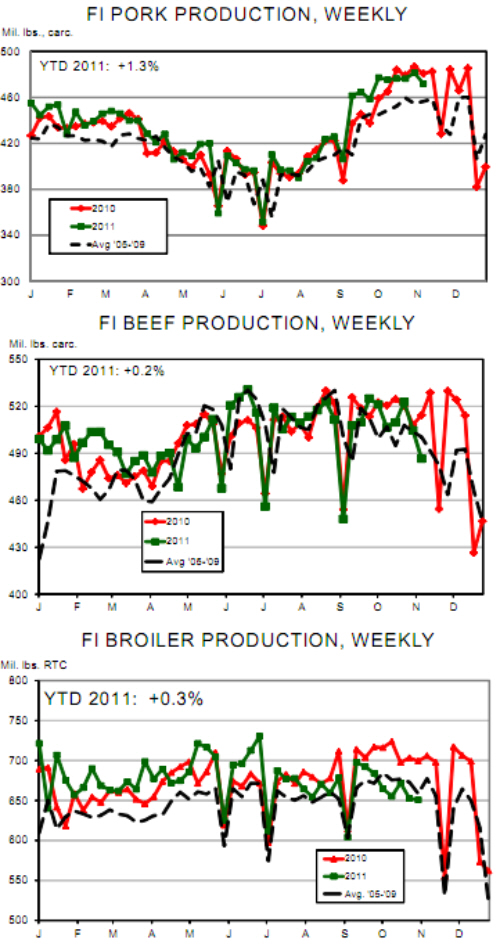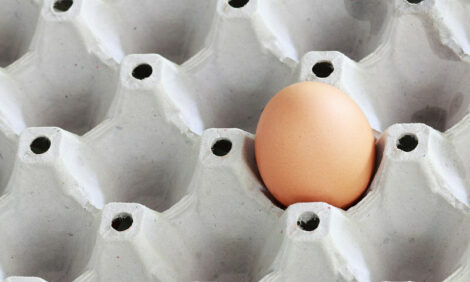



CME: Beef, Pork & Broiler Production Down
US - Two pieces of data that were available for each species for last week are estimated slaughter and production and the changes that are occurring are, we think, critical to price expectations for the winter and spring, write Steve Meyer and Len Steiner. The patterns for the three major
species, though, are sharply different.
Pork production continues to run at levels very near those of
2010. Last weeks estimated output of 472 million pounds was 1.8 per cent
lower than last year.
That marked the fourth straight week of lower
output on a year-on-year basis after two months of higher production.
The production figure was driven by slightly lower slaughter than one
year ago (2.293 million head vs. 2.316 million head) and estimated
average carcase weights, at 206 pounds, that were down two pounds
from last year.
We believe the important feature of the top chart (below),
though, is the leveling of slaughter in the 2.300 to 2.335 million head
range.
That is very close to current weekly slaughter capacity assuming a "normal" operating rate of roughly 5.4 days per week. USDA’s
September Hogs and Pigs report, which has been, according to our
calculations, quite accurate in predicting weekly slaughter since 1 September, suggests that slaughter will remain very close to these levels through year-end except, of course, for holiday slowdowns.
Weekly beef production plunged to its lowest level for a nonholiday week since early April. The reduction in output to 487 million
pounds was driven by sharply lower total slaughter of 625,000 head.
In case you were wondering, Veteran’s Day was in the same week
last year so year-on-year comparisons are valid. That 625,000 was
5.4 per cent lower than last year and 7.1 per cent lower than just two weeks ago.
Note, though that this year’s weekly beef production is actually following the long-term seasonal pattern better than it did last year so, while
abrupt, lower beef production should not be a big surprise. The challenge, of course, is predicting when the cattle from this year’s odd
placement pattern and weights will reach market weight.
Finally, FI broiler output continued to track significantly lower
than one year ago. In fact, production for the week of 5 November
was the lowest for a non-holiday week since January and we recall
that that number was driven by heavy snowfall in southern chickenrearing states.
Lower slaughter (by 5.3 per cent) was the big factor but average weights were, for only the second week this year, actually lower
(by 1.2 per cent) than one year ago.
Last week’s average of 4.26 pounds
was 3.2 per cent than just two weeks ago.
Does this mark a long-needed
reduction in the number of large boning birds and thus burdensome
breast meat supplies?










